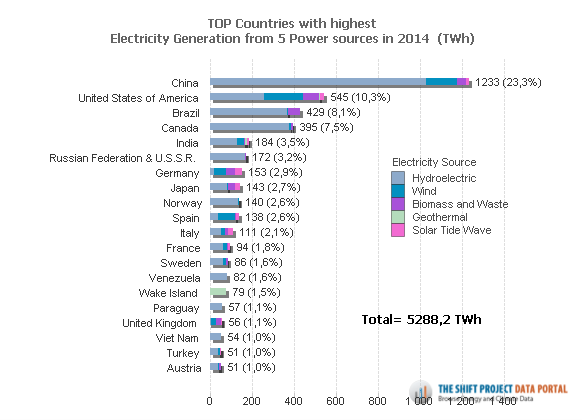Highlights
- The IC1 Country Report 2019 was released in May 2019, showcasing energy strategies, trends, projects and actions underway in the field of smart grids in IC1 participating countries.
- At MI-4 (May 28, 2019), the Smart Grids Innovation Accelerator (SGIA) was presented to MI Ministers by Italy, with the strong support of China, India and IC1 members. Find out more in this video.
- The fourth IC1 Deep Dive Workshop, held in Rome, Italy in November 2018, brought together experts, industry leaders and Mission Innovation representatives to discuss how this emerging technology can help accelerate the growing capacity of renewable energy generation in electricity grids.
- A three-day deep dive workshop was held by IC1 on the margins of the third Mission Innovation Ministerial in May 2018, including a workshop in Copenhagen that was open to the public.
- Update on IC1: achievements and future plans (May 2018)
- IC1 held the Second MI Smart Grid Innovation Workshop at the Indian Institute of Technology (IIT) – Delhi in November 2017.
Co-leads: China, India, Italy
Participants: Australia, Austria, Brazil, Canada, Denmark, European Union, Finland, France, Germany, Indonesia, Mexico, Netherlands, Norway, Republic of Korea, Saudi Arabia, Sweden, United Kingdom, United States
World electrical energy consumption is increasing at the rate of 1.4%/year1, with an associated increase in greenhouse gases (GHG) emissions that are negatively affecting the climate around the globe. Thus, a fundamental transformation of the world’s power systems is under way to deliver zero-emissions power to an increasingly electricity-hungry world.
For example, eighteen cities in the United States have committed to maximising the amount of energy they use from renewable energy, up from 25% today.2 Meeting this challenge requires a transition from the power grid that today relies on coal and gas power plants, to a future grid that can be largely powered by decentralized renewable energy sources, and which can dynamically adjust supply and demand in order to handle the intermittency of solar and wind power.
While the challenges are significant, so are the opportunities. By 2040, it is expected that zero-emission energy sources will make up 60% of installed capacity. Wind and solar will account for more than 60% of the new power generating capacity added worldwide. This represents more than 8 terawatts of generation capacity and about 7 trillion USD of the $11 trillion USD invested.3
Innovation in smart grid and storage technologies, and the development of community or city scale discrete grids powered largely or solely by renewables that can operate in parallel with, or independently from, the main grid (known as ‘renewable micro grids’), will help accelerate these developments.
The issue
Excessive combustion of fossil fuels for generating electricity is leading the growth of GHG emissions that in turn fuel climate change. A key solution to this problem is the increased use of renewable energy sources. However, there is a concern that a high penetration of renewable energy can cause reliability and interoperability issues when connected to the existing power network due to their intermittent nature i.e., it is not always sunny and the wind does not blow all the time.
Research and development in the field of smart grids and storage is needed to develop technology solutions to address the challenges related to the development, design, integration, operation, management, and optimization of grids in a way that allows the use of up to 100% renewable energy.
The opportunity
Smart grid and storage research is a vital opportunity for governments and the private sector to join hands with the goal of finding the best technology solutions for realising the future grid.

Recent growth in the installation of renewable energy based power plants across the globe clearly indicates worldwide interest from developed and developing countries to participate in the goal of minimising net carbon emission. It also opens new pathways to meet global energy demand and aids governments to electrify remote locations far from the reach of centralised grids. Smart grids and storage solutions are needed to interlink the centralized power network with renewable energy based power plants. At consumer level (residential or industrial), smart grids will also help in optimally balancing supply and demand by enabling shifting of peaks in demand.
Most of the Mission Innovation member countries are pioneers in the research field of smart grids. Their knowledge on the subject matter, along with the commitment towards investing more on research, will act as a catalyst to speed up the realisation of smart grids in the near future.
The implementation
Smart grid implementation involves a series of actions, which starts with innovation in technology to address the interfacing issues related to renewable energy sources, implementing models and studying various shortcomings related to the different sub systems such as energy storage, on/off grid operations, integration of large amount of decentralized renewable power in distribution networks and developing technologies at the level of consumers for demand side management (demand response).
The smart grid innovation challenge aims over the next decade to develop and demonstrate the use of smart grid technologies and storage in a variety of grid applications, including demonstrating the robust, reliable operation of MW-sized micro grids in diverse geographic conditions. By 2030, the objective is to develop technology solutions that can accommodate 100% renewable based power plants in large scale across the globe.
For more information, please visit the IC1 website.
- International Energy Outlook 2016,May 11, 2016 | Washington, DC
- L.A.’s Quest to Cut Fossil Fuels”, The New York Times, Editorial (http://mobile.nytimes.com/2016/10/12/opinion/las-quest-to-cut-fo
ssil-fuels.html?smid=tw-share&referer=https://t.co/7SrgcbYeva). - New Energy Outlook 2016, Bloomberg New Energy Finance.
 IC1: Smart Grids
IC1: Smart Grids